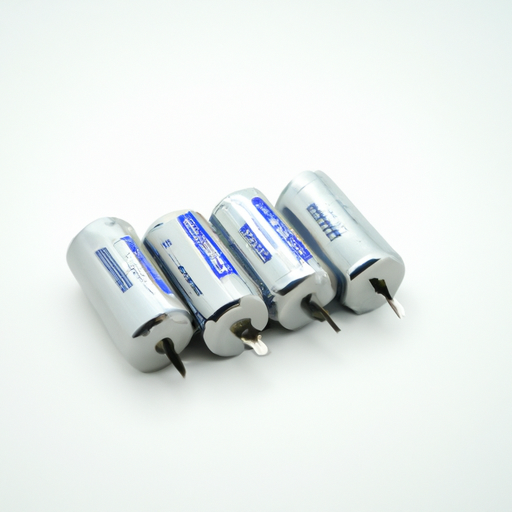Core Functional Technologies of Film Capacitors
1. Dielectric Material: Film capacitors utilize thin plastic films as the dielectric material, which can be made from various polymers such as polyester (PET), polypropylene (PP), and polycarbonate (PC). The choice of dielectric affects the capacitor's performance, including capacitance stability, temperature coefficient, and voltage rating.
2. Low ESR and ESL: Film capacitors typically exhibit low equivalent series resistance (ESR) and equivalent series inductance (ESL), making them suitable for high-frequency applications. This characteristic allows for efficient energy storage and discharge, minimizing power losses.
3. High Voltage Ratings: Film capacitors can handle high voltage applications, often exceeding 1000V, depending on the dielectric material and construction. This makes them ideal for power electronics and industrial applications.
4. Temperature Stability: Film capacitors maintain stable capacitance values over a wide temperature range, which is crucial for applications in harsh environments. Their low temperature coefficient ensures reliable performance in varying conditions.
5. Self-Healing Properties: Many film capacitors possess self-healing capabilities, meaning that if a dielectric breakdown occurs, the capacitor can recover without permanent damage. This feature enhances reliability and longevity.
6. Environmental Resistance: Film capacitors are generally resistant to moisture, chemicals, and UV radiation, making them suitable for outdoor and industrial applications.
Application Development Cases
1. Power Electronics: In power supply circuits, film capacitors are used for filtering, energy storage, and snubber circuits. Their low ESR and ESL characteristics help improve the efficiency and performance of power converters and inverters.
2. Audio Equipment: High-fidelity audio applications benefit from film capacitors due to their low distortion and high linearity. They are often used in signal coupling and decoupling applications, ensuring high-quality sound reproduction.
3. Renewable Energy Systems: In solar inverters and wind turbine controllers, film capacitors are employed for energy storage and filtering. Their ability to handle high voltages and temperatures makes them suitable for these applications.
4. Motor Drives: Film capacitors are used in motor drive applications for DC link capacitors, where they help smooth out voltage fluctuations and provide energy storage during operation. Their reliability and performance contribute to the efficiency of electric motors.
5. Telecommunications: In communication systems, film capacitors are used for RF filtering and decoupling applications. Their stability and low losses at high frequencies make them ideal for maintaining signal integrity.
6. Consumer Electronics: Film capacitors are commonly found in various consumer electronics, including televisions, computers, and appliances, where they are used for power supply filtering and signal processing.
Conclusion
The CFR-25JB-52-1M1 film capacitor exemplifies the advanced technology and versatility of film capacitors in modern electronic applications. Their unique properties, such as low ESR, high voltage ratings, and self-healing capabilities, make them indispensable in a wide range of industries, from power electronics to consumer goods. As technology continues to evolve, the demand for reliable and efficient capacitors like the CFR-25JB-52-1M1 will only increase, driving further innovation and application development.
Future Trends
As the demand for more efficient and compact electronic devices grows, film capacitors are expected to evolve further. Innovations in dielectric materials and manufacturing processes may lead to even higher performance characteristics, such as increased capacitance density and improved thermal management. Additionally, the integration of smart technologies may allow for real-time monitoring of capacitor health and performance, enhancing reliability in critical applications. The ongoing development of electric vehicles, renewable energy systems, and advanced telecommunications will continue to drive the need for high-performance film capacitors, ensuring their relevance in the future of electronics.






